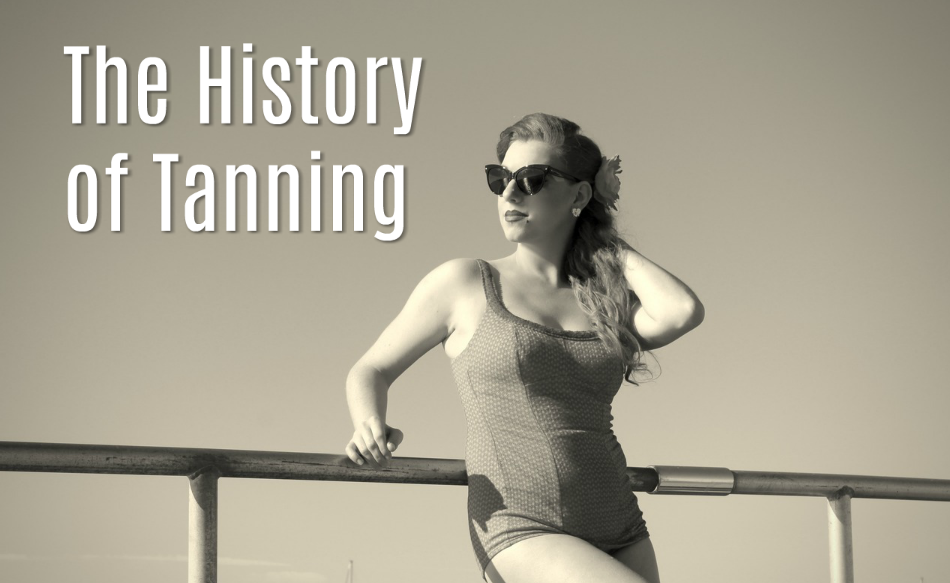Posted by: Prosun International on July 18, 2018 | Topic: Industry News
The History of Tanning

The History of Tanning
PAST
Tanning has a long documented history from the earliest known civilizations. Tanning is more than just style. It’s helped humans thrive for thousands of years. Tanned skin has helped protect the human body from damaging effects of excessive sun exposure. 
At first, the cosmetic effects of sunshine did not interest humans. Instead, the sun was seen in a more spiritual light. Humans worshiped the sun like a god, praising sunshine for it’s warmth and growth of crops.
In early cultures, a therapeutic practice of sunbathing for health was called heliotherapy. Even Hippocrates, the famous Greek physician, believed the sun was a viable medical remedy for certain illnesses.
When civilizations began to divide towards the ruling vs the working class, for hundreds of years, skin color became a symbol of class, differentiating servants from their masters. Whiter, lighter skin symbolized youth, purity, wealth, and social status when tan skin symbolized dirt, work, and poverty.
Ancient women of Rome and Greece used lead paint or chalk to make their faces white which wrinkled their skin prematurely and led to death through slow poisoning. Arsenic was later used as a skin whitener, which resulted in thousands of deaths. Later, they used parasols and masks to go outdoors.
The Industrial Revolution was when tanned skin earned public favor again.
RECENT
Tanning is a common fashion statement today, but only recently in this century has the practice of tanning skin become popular throughout the world.
Coco Chanel of Chanel perfume is widely accredited for effectively influencing the upper classes worldwide for bronzing skin color in the 1920s. Her tan was allegedly caused from a trip on a yacht and might have been an accident, which should have been considered an embarrassment. Instead, it took hold as a fashion statement and women everywhere started to wear less restrictive clothing to enjoy more outdoor activities and work.
“The best color in the whole world is the one that looks good on you!” Coco Chanel. 
Tan skin now represents health, wealth, beauty, youth and social status by both men and women.
Tanning received more public favor in the US after WWII because:
- Many soldiers returned from war in the hot climates of Asia, the Mediterranean and South Pacific, which gave them a healthy, rugged look admired by many and indirectly associated with the struggle for democracy.
- Before the war, Americans had never considered taking vacations to warm and exotic climates. People with tan skin could suggest to others that they were wealthy and well-traveled, even when neither was the case.
During the 40s-60s, self-tanners, tanning oils, and tanning lotions with SPF became popular.


EVOLUTION OF INDOOR TANNING
The first indoor tanning lamps were not intended for cosmetic purposes, but for the study of photobiology ( study of light ), which replicated sunlight indoors.
In 1970, Friedrich Wolff, a European scientist (aka the father of indoor tanning), invented the first tanning device. The first cosmetic tanning units were manufactured in Europe where it is now regulated by the governement and considered a highly professional industry.
The indoor tanning industry came to America in the late 70s, boomed in the mid-80s. In 1987, tanning salons were the fastest growing US business, according to the American Business Information, which gathers statistics from the Yellow Pages.
In the 80s & 90s, salons successfully combined other services with tanning such as selling clothing and accessories related to tanning, nail or hair services. Today, the tanning industry is now accepted as a scientific mix of cosmetology. Indoor tanning advocates promote regulation, education and safety as key goals for the industry of “Smart” tanning.


FUTURE
What once seemed to be a fade, has continued to blossom into a multibillion dollar industry that employs thousands and supports many other cosmetic businesses.
Experts believe tanning will remain the same in years to come because many tanners are busy, hard-working people who cannot spend time sunbathing on the beach or their backyard during daylight hours. However, they wish to maintain their summer glow and give the impression they lead an active, healthy lifestyle.

Tanning at a salon that is clean, affordable, well-maintained and equipped ProSun tanning beds is the best choice!



















